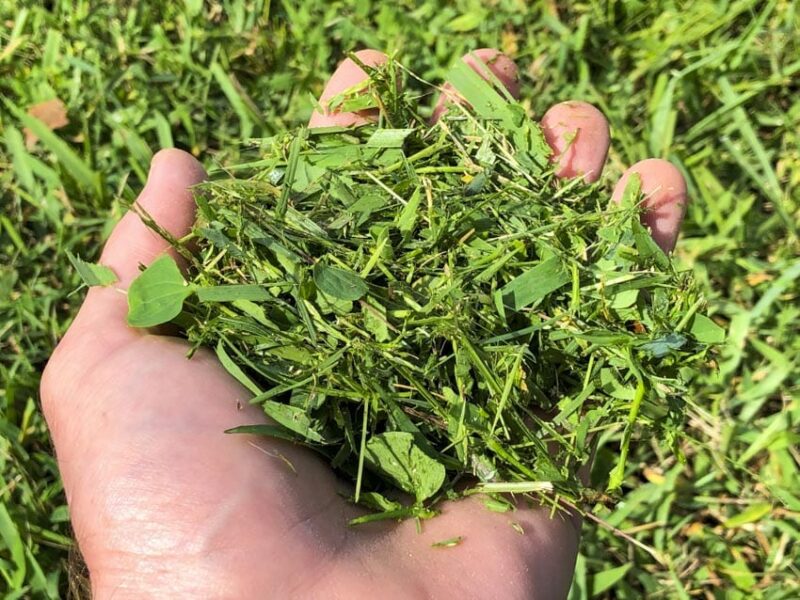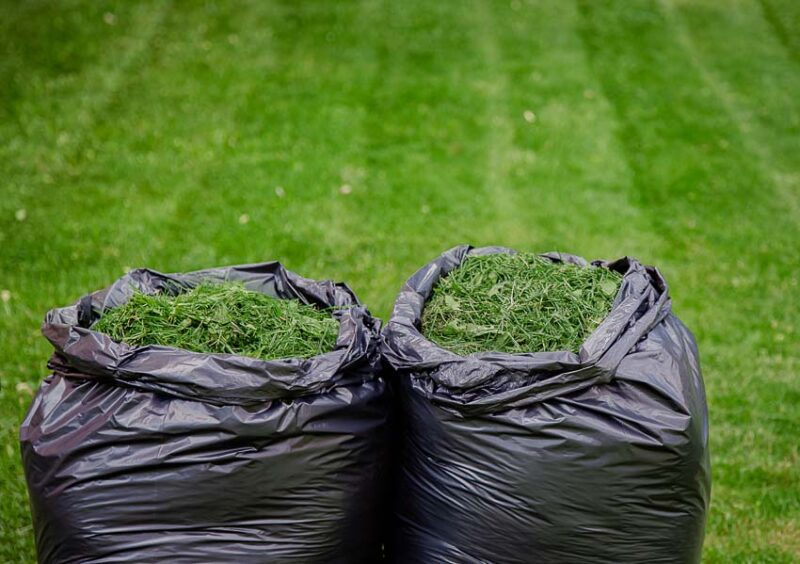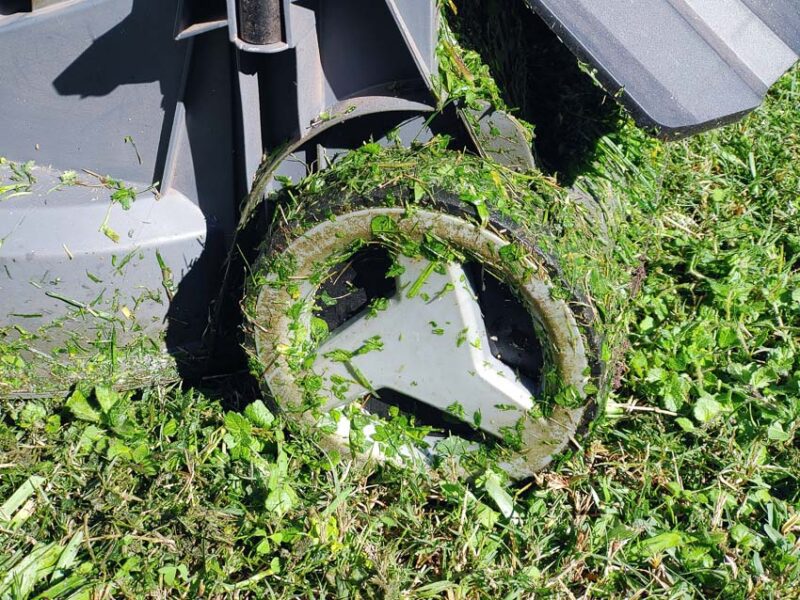The mulching vs bagging grass debate isn’t as intense as Milwaukee vs DeWalt (I’m not sure either side has changed anyone’s mind in that one), but it is important to your lawn care approach. In this article, I’ll share the differences between mulching and bagging so you can decide which one is the better choice for your needs. You might find that what you’ve been doing is spot on, or perhaps you’ll find a reason to change things up.
Mulching vs Bagging Advantages

Why You Should Mulch Grass
- Easier: The mulching process happens while you mow, so you’re done in one step and less time.
- Eco-friendly: Clippings go back into the grass, so neither they nor trash bags go to the landfill.
- Free Fertilizer: As clippings decay, they release nutrients back into your lawn, helping it stay healthy and resilient.
- Maintains Moisture: Clippings are 90% water, supporting microorganisms that help break down thatch.
- Reduced Erosion Risk: Mulching inhibits soil compaction, making it less likely to erode.
- Lower Cost: There are no trash bags or replacement mower bags to purchase.

Why You Should Bag Grass
- Better Curb Appeal: With the majority of clippings bagged up, your lawn has a cleaner look.
- Creates Compost: Grass clippings are a great addition to your composting efforts.
- Fewer Pests and Diseases: Removing clippings can inhibit the spread of fungi and discourage pests.
- Fewer Weeds: Mulching and discharging can help spread weed seeds and enhance germination.
- Reduced Allergens: Bagging clippings removes many of the allergens mowing creates, especially in dry conditions.
Mulching vs Bagging Process
Mulching Grass
Mulching is the easiest process since all you have to do is mow… once you’re set up for it. Before you start cutting, make sure your mulch plug is in place and consider switching to a mulching blade for best results.
As you mow, the blade does two things: cut the grass and create airflow. That airflow pulls the clippings up into the deck, ensuring the blade can chop them several times before they’re able to drop down into the grass.
Bagging Grass
The easiest way to bag grass is to capture it in the bag that comes with your lawn mower. From there, you can take it directly to your compost pile, transfer it into trash bags/yard bags, or dump it straight into your trash can. If you don’t have a bagger, you’re stuck raking the lawn before you can put the clippings into bags.
Before you start bagging, remove the mulch plug if it’s present and install the bag or side discharge chute. Consider switching to a high-lift blade for the best results.
Under the deck, the blade cuts and creates airflow like it does when you mulch. However, it sends the clippings through a chute and into the bag or out the side instead of keeping them trapped in the deck until they fall out.
Mulching vs Bagging Wet Grass

Mowing wet grass is not fun. Clippings tend to stick to the deck, interrupting airflow no matter which process you use.
When you’re mulching, the clippings are larger, so they don’t break down as quickly or settle into your grass as deeply.
When you’re bagging, clippings tend not to make it all the way to the back of the bag, forcing you to empty more often. Wet grass also makes for a heavier bag as it fills and it’s much more likely to clog the chute.
If you have to choose between the two, I recommend mulching. Try to wait for the driest conditions. If things dry out a few days later, you can mow again to pick up some of the larger clippings and do a more efficient mulch job with them.
Common Questions About Mulching vs Bagging Grass
Does mulching contribute to thatch buildup?
It’s a common misconception that mulching contributes to thatch buildup. In reality, grass clippings are made up of around 90% water and they decompose quickly once they settle into your lawn. Excess thatch occurs when there aren’t enough healthy microbes in your soil to break down organic matter at the root zone.
Should I mulch grass if my lawn is full of weeds?
If your lawn has a weed problem, mulching isn’t the best solution. Mulching your grass clippings can increase the germination rate of the weed seeds and spread them throughout your lawn. It’s better to bag your clippings in the spring and apply a pre-emergent weed treatment to reduce weed growth.
Does mulching attract pests?
While a few pests can actually signal a healthy lawn, too many pests can be annoying and damage your lawn. Mulching your grass clippings can contribute to lawn moisture and temperature, which may create a favorable environment for certain pests. If you notice any signs of insect infestations or fungus, start bagging your clippings and spot-treat affected areas until the problem is under control.
Will bagging clippings remove all the nutrients from my lawn?
While grass clippings can provide your lawn with valuable nutrients, bagging your clippings does not deprive your lawn of nourishment. Keeping a regular fertilizing schedule is the best way to keep bagged lawns looking great, but you can reduce the need for fertilizer by mulching.
Can I switch between mulching and bagging throughout the year?
You can (and should) switch between mulching and bagging throughout the year. For people who like to bag, experts recommend mulching during wet seasons and in the fall to mulch fallen leaves. For those who like to mulch, don’t be afraid to bag when you need to get pests or diseases under control.



